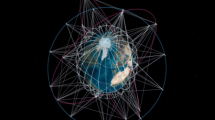 Planet Labs, a provider of daily data and insights about Earth, and dMY Technology Group, a publicly traded special purpose acquisition company (SPAC), have entered into a merger agreement.
Planet Labs, a provider of daily data and insights about Earth, and dMY Technology Group, a publicly traded special purpose acquisition company (SPAC), have entered into a merger agreement.
Speaking about the merger, Will Marshall, CEO and Co-founder of Planet, said: “At Planet our goal is to use space to help life on Earth. We have this huge new dataset — an image of the entire Earth landmass every day — which we serve up via a Bloomberg-like terminal for Earth data, making it simple to consume and expanding reach to potentially millions of users across dozens of verticals. As the world shifts to a more sustainable economy and more companies and governments set their sustainability and ESG goals, the first step in achieving these objectives is measurement. Planet’s daily, global data is foundational to making that transition. We’re excited to reach this important milestone of taking Planet public to significantly accelerate our mission, and to be doing so with dMY and other great investors.”
Through this transaction, Planet will invest to accelerate its growth by further expanding into existing and new markets, as well as building additional software and machine-learning-enabled data products and solutions.
Founded in 2010, Planet has raised around $374m to date, and operates the Earth-imaging satellite constellation in operation. They have launched 462 satellites to date, and its current orbital fleet features 21 satellites that can capture imagery at a 50-centimetre resolution and about 120 that can capture imagery at a near three-meter resolution.
They snap 3m images per day across more than 150m square miles. It has, on average, 1,500 pictures for each spot on Earth, and the images are taken at regular intervals over time.












Add Comment